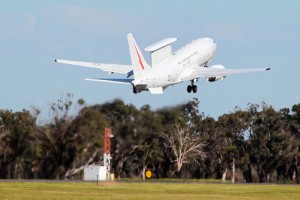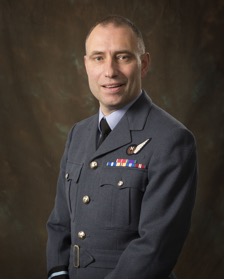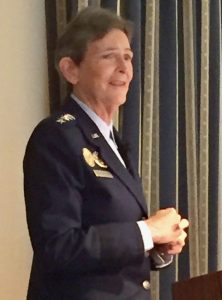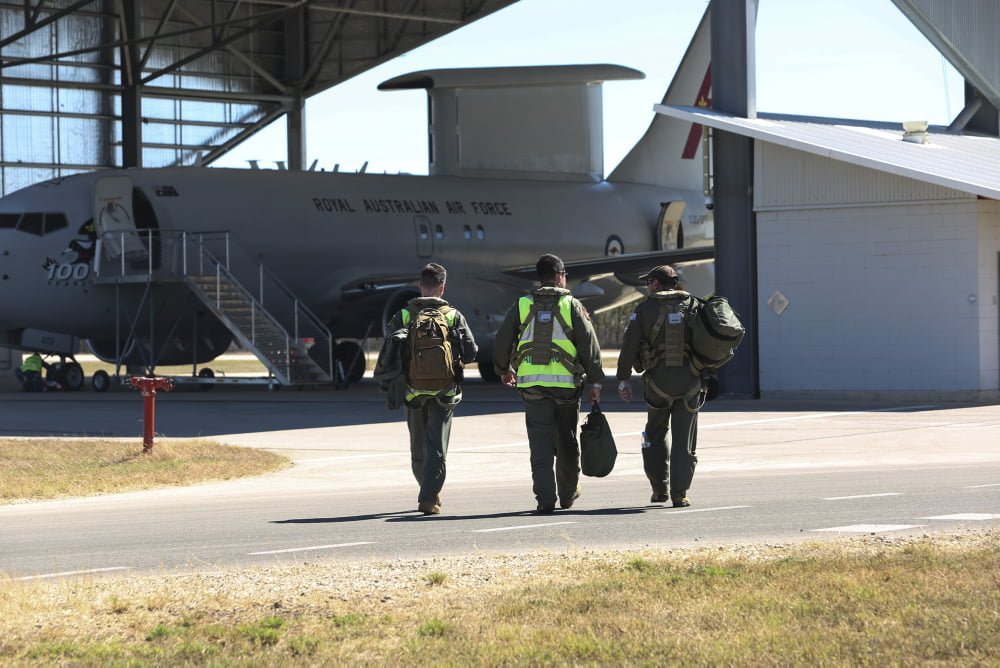2017-07-18 By Robbin Laird
I have focused in several interviews on the basic shift towards building software upgradeable platforms as the base line for shaping a 21st century air enabled combat force.
The strategic shift has been to develop and buy core multi-mission platforms and to modernize them through software upgrades.
Yet the US acquisition system and its business rules are not set up to manage this historical transition.
The result will be much slower modernization and needless combat deaths or combat failures as reactive enemies seek to exploit slo mo software modernization caused by bureaucratically determined requirements priorities.
Indeed a key capability necessary to stay ahead in the tron warfare world is much more rapid software upgrades.
The Aussies have referred to this as the challenge of software transient advantage and have highlighted the need to shape a 21st century acquisition system, which allows this to happen.
They are trying to make this happen in key programs like the Wedgetail.
In an interview with Group Captain Bellingham, the Officer Commanding 42 Wing, this process was discussed as follows:
Question: During the visit, we have been in the squadron building, the hangar and in the System Program Office collocated with the squadron.
What advantages does that bring?
Group Captain Bellingham: “It facilitates a close working relationship between the combat force and the system developers.
“We can share our combat experiences with the RAAF-industry team in the SPO and to shape a concrete way ahead in terms of development.
“The team is very proactive in working collaboratively to get to the outcome we’re looking for.”

A No.2 Squadron E-7A Wedgetail aircraft takes off from RAAF Base Williamtown.
Question: In the SPO facility, you have a Virtual Wedgetail, which is the currently configured Wedgetail systems but located on the ground.
How has that worked for you?
Group Captain Bellingham: “It is crucial for reaching out to the warfighting community. We have plugged into both Army and Navy officer training courses.
“We are using it to work closely with the Army and Navy getting ready for our Fall exercise with the LHD to shape a task force concept of the amphibious ships.
It provides a realistic way for Army and Navy officers to see what we contribute to their warfighting tasks.
“We need a crew in the Virtual Wedgetail to make it work because they have to have the right experience and background to provide that level of reality to the force which then the warfighters can experience what we can bring right now to the fight.
https://sldinfo.com/visiting-williamtown-airbase-the-wedgetail-in-evolution/
For transient software advantage to become the coin of the realm, the operators need to be working directly with the software code writers without the interference from hierarchically distant acquisition officials and “testers.”
Once the platform has been built and software enabled, then the users and the code writers need to be funded to provide capabilities, which the platform as a system can deliver.
Acquisition leadership then becomes strategically sorting through which capability should be enhanced on which platform within the evolving 21st century combat force.
The RAF officer in charge of the ISTAR force described this shift to strategic acquisition leadership as opposed to hierarchical assurance of slow mo software upgrades as follows:
“We have the iPhone 6 generation in the Force now, yesterday’s analogue approach to our business is no longer appropriate.
“With the aperture fully open, the individual platforms and capabilities become the apps that enable the integrated Force ‘iPhone’.
“Thinking of it in this way, will allow us to tap this new generation of warriors.”
 Air Commodore Dean Andrew. Credit: RAF
Air Commodore Dean Andrew. Credit: RAF
He also seeks to build a sense of strategic purpose and community from bottom to top.
He cited the example of when President Johnson met a janitor at the NASA space center in Houston and when asked what he was doing, the janitor replied: “I am helping put a man on the moon, Mr. President.”
“We are driving to a similar mindset in the ISTAR Force – everyone contributing regardless of where they work.”
He argued that this perspective was essential to mission success.
“The paradigm shift needs to be cultural and organizational if the ISTAR force with a large F to become a reality.
“We are going from a tradition where we have operated isolated force elements to one where an integrated force can deliver 24/7 support and we need to shape a Whole Force solution approach.”
Getting it right for ISTAR is critical to the success of the RAF’s contributions to operations and to the UK’s intelligence and understanding of the world.
The Air Commodore concluded:
“One cannot simply pause, and recapitalize the force in a vacuous power point exercise.
“It is about transformation ‘in contact’ and ensuring that we leverage maximum integrated capability from the new platforms coming to the RAF, while re-brigading the legacy systems as best we can and putting in place the foundations required for an adaptable, upgradeable and technology driven capital F force in the 2025 time frame and beyond.”
Recently,General Ellen Pawlikowski, Commander of Air Force Materiel Command, provided a hard-hitting overview on how important she thought the need to break through on management of software upgradeability.
At a Mitchell Institute breakfast meeting on July 14, 2017, she focused on the barriers and need to shape a combat force, which was empowered by agile software development.
Her presentation focused on what she referred to as the cultural barriers to change but being even blunter the current acquisition approach guarantees that unnecessary review and control layers in the bureaucracy will slow software upgradeability.
One could easily ask how many acquisition officials could even read let alone write code, but the broader point is that the so-called oversight system needs to be radically changed.
The General was kinder and gentler than I am being here.
But she was certainly direct enough in her outstanding presentation on the challenge and how to meet it.
The acquisition system has been built around a 20th century systems engineering model, one which sets requirements and designs the way ahead in a manner in an iterative requirements process which is simply inappropriate for a software driven force.
“We are very much enamored with our systems engineering processes in the Department of Defense.
“We have processes that drive us to start with requirements and continue to work those requirements through rigorous testing.
“When I was on the job at SMC I learned that OCS had failed their preliminary design review.
“But preliminary design reviews don’t make any sense when you are doing software development.
“Agile Software development is all abut getting capability out there.
“The systems engineers approach drive you to a detailed requirements slow down.”
She highlighted that this cultural barrier, namely reliance on the historical systems engineering approach, needed to be removed.
“We have to change the way we think about requirements definition if we’re going to really adopt Agile Software Development.
“Maybe the answer isn’t this detailed requirements’ slow down.”
“By the way, once you put it in the hands of the operator maybe some of those requirements you had in the beginning, maybe they don’t make any sense anymore because the operator sees how they can actually use this and they change it.”
She went on to highlight what the Aussies are doing in Willliamtown with Wedgetail without mentioning them at all.
“You need to put the coder and the user together…
“We have to empower at the right level, and that has to be at the level of the person that’s going to use the software, and we have to stop thinking about independent OT.”
She then went after the way sustainment is thought about for the software enterprise.
“The other thing that we have is this idea that software is developed and then sustained.
“What the heck does that mean?
“Software doesn’t break.
“You may find something that doesn’t work the way you thought it was, but it doesn’t break.
“You don’t bring it in for corrosion mitigation or overhaul on the engines.
“When you’re look at what we do in software sustainment a lot of it is continually improving the software.”
 General Ellen Pawlikowski, Commander of Air Force Materiel Command, at the Mitchell Institute breakfast, July 14, 2017. Credit: SLD
General Ellen Pawlikowski, Commander of Air Force Materiel Command, at the Mitchell Institute breakfast, July 14, 2017. Credit: SLD
She also argued that we need to change the approach to contracts and to the working relationship with industry.
“The teams are there for life.
“I don’t mean that it’s one person, but we don’t think about putting a team together to do the development and then push them out the door.
“That team stays with that system forever…
“We need to make the user the operational user and acceptance authority.
“Perhaps we need to shift to more use of time and materials contracts to support such teams.”
In effect, if the shift is to build the kill web rather than buy stovepiped systems the ability to manage software upgradeability in an agile manner is a crucial capability.
“Right now, the network is the tail on the dog.
“The weapons systems are the big ones that call all the shots.
“Just think about the challenges you’ve always had at getting new GPS capability on our platforms.
“We only do it 1/15th of the schedule for the hardware.
“That’s not going to work.
“How are we going to do this right?
“Some of it is cultural.
“Some of it we’re going to have to drive changes in DOD and Air Force policy.”


